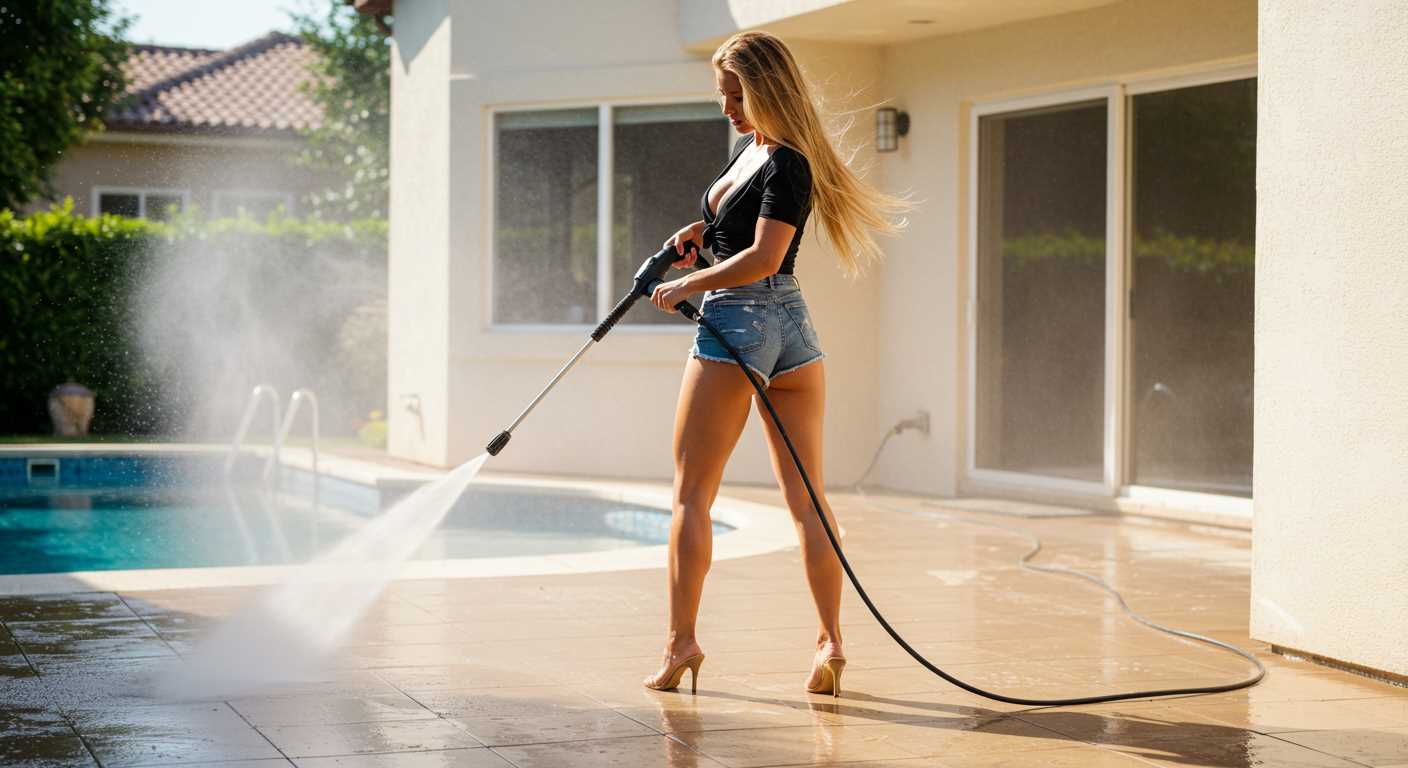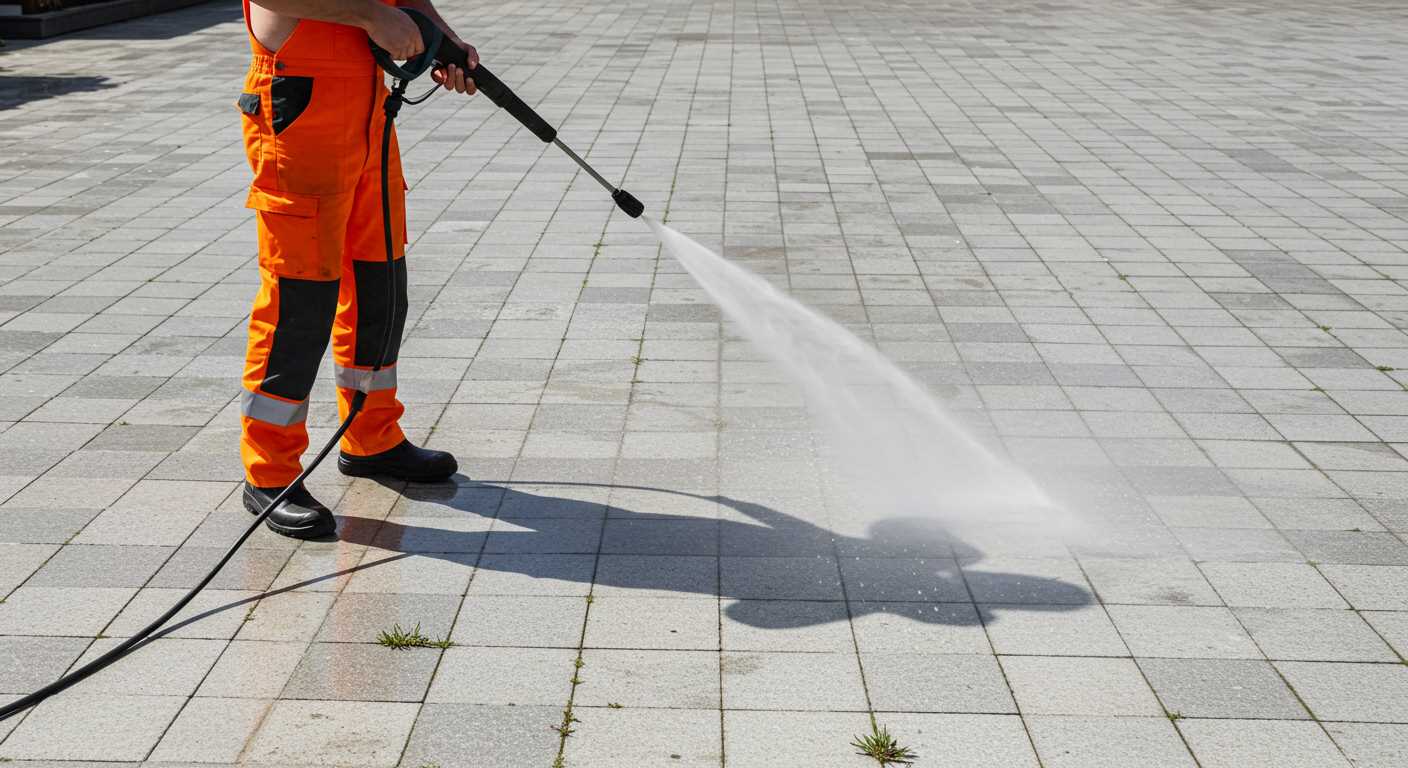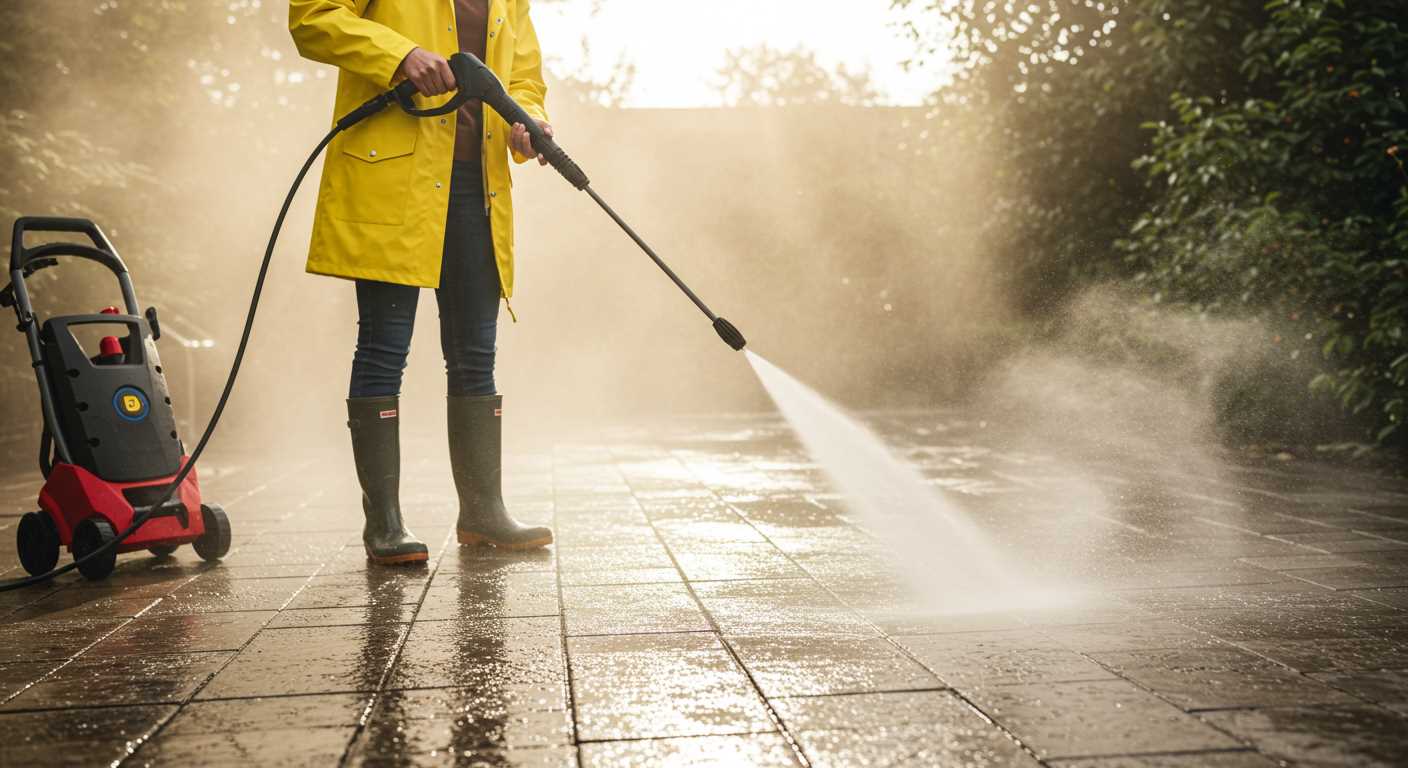



Typically, high-pressure cleaning devices are not recommended for synthetic surfaces. The intensity of the water stream can easily lead to damage such as warping, scratching, or even complete disintegration. Opt for low-pressure settings and test on a hidden area before applying directly to visible surfaces.
For effective cleaning, consider using a detergent designed for synthetic materials alongside the water. This combination can help lift dirt without the need for aggressive water pressure. Ensure to rinse thoroughly with clean water afterward to prevent residue build-up.
When cleaning outdoor furniture or storage containers, always check the manufacturer’s guidelines to confirm compatibility with high-pressure cleaning. Some items may have specific recommendations on maintenance that differ from the general advice provided here.
Understanding the Types of Plastic Safe for High-Pressure Cleaning
High-pressure cleaning techniques are suitable for specific types of synthetics. The following categories of materials can withstand rigorous washing without sustaining damage:
- Polyethylene (HDPE and LDPE): Both high-density and low-density polyethylene are resilient to pressure. Items such as garden furniture and storage containers typically fall within this category.
- Polypropylene (PP): Often found in automotive parts and household items, polypropylene exhibits good resistance to harsh cleaning. It’s important to ensure compatibility with other materials in composite products.
- Acrylic (PMMA): Acrylic surfaces can endure moderate pressure cleaning. However, care must be taken to avoid high temperatures as this can cause warping.
- Polycarbonate: This robust material is often used in safety equipment and outdoor applications. It should be cleaned at a safe distance to avoid surface scratching.
Types of Plastic to Avoid
Some types of polymers are prone to damage from high-pressure washing. Consider these materials as sensitive:
- PVC: While rigid, it can crack under extreme pressure and should be treated with care.
- Polystyrene: Fragile and easily damaged, polystyrene should never be subjected to high-pressure cleaning.
- Thermoplastic Elastomers (TPE): These flexible materials can lose their shape and adherence when exposed to high pressure.
Always evaluate the specific product’s resistance to high-pressure cleaning before initiating the process. Testing a small, inconspicuous area may prevent damage and verify compatibility with the cleaning method chosen.
Recommended Pressure Settings for Plastic Surfaces

For thorough cleaning of synthetic materials, a low-pressure range is advisable. Settings between 1200 to 1500 PSI effectively remove dirt without damaging the surface.
Factors Affecting Pressure Selection
Variations in type and condition of the material influence optimal pressure. For softer, thinner plastics, staying around 1200 PSI is preferable. More durable varieties can handle pressures up to 1500 PSI, yet caution remains paramount.
Distance and Nozzle Considerations
Maintain a distance of at least 18 to 24 inches from the surface during operation to prevent etching or warping. Utilising a wide-angle nozzle (25 to 40 degrees) helps disperse the force, ensuring a gentler approach.
Best Nozzle Types for Washing Plastic Materials

For optimal results while cleaning synthetic surfaces, a few specific nozzle types stand out. Selecting the right attachment can significantly influence cleanliness without causing damage.
Rotary Nozzle
The rotary nozzle, or turbo nozzle, offers a concentrated water stream that rotates, delivering intense cleaning power. This type suits heavily soiled areas like outdoor furniture or storage bins made from composite materials. When maintaining garden décor or outdoor equipment, utilise a rotary attachment, ensuring to keep a safe distance to prevent warping or scratching.
Fan Spray Nozzle
The fan spray nozzle, typically with a wider angle, evenly distributes water, making it ideal for larger surfaces. An angle of 25 or 40 degrees is recommended for cleaning gentle materials. This attachment effectively removes grime from patio furniture and garden toys without risking damage or abrasion.
| Nozzle Type | Recommended Uses | Optimal Angle |
|---|---|---|
| Rotary Nozzle | Heavy-duty cleaning on textured surfaces | Variable |
| Fan Spray Nozzle | General cleaning of larger areas | 25-40 degrees |
| Soap Nozzle | Applying cleaning agents | Varies |
Using the right nozzle not only makes the task efficient but also safeguards your items from potential harm. Always perform a test on a small area before proceeding with full cleaning, ensuring compatibility with the surfaces you’re treating.
Common mistakes to avoid when pressure washing plastic

Avoid using excessive force; high psi can cause irreversible damage to many components. Stick to recommended settings for the specific material to ensure longevity.
Using the wrong nozzle can lead to uneven cleaning. Opt for fan nozzles with wider spray patterns to distribute pressure evenly and minimise the risk of scratching.
Don’t pressure clean in direct sunlight. Heat can make materials softer and more vulnerable to damage. Early mornings or late afternoons are ideal for this maintenance task.
Neglecting to test on a small, inconspicuous area first can result in visible harm. A quick test spot can prevent broader issues and help gauge how the surface reacts.
Check for loose sections before commencing a wash. Items like outdoor furniture often have joints or fasteners that can loosen, leading to further complications during the process.
Skipping a pre-rinse can allow grime and dirt to become caked on. A light rinse helps lift debris before applying higher pressure.
Don’t pressure wash near electrical connections or outlets. Water intrusion can cause malfunction or hazards if not carefully avoided.
Failing to follow up with a post-wash inspection can miss areas that still require attention or reveal issues that arose during cleaning.
Always remember to allow surfaces to dry completely before applying any protective coatings or treatments. This ensures proper adhesion and effectiveness.
How to Protect Surrounding Areas While Pressure Washing
Shield nearby surfaces and objects with heavy-duty tarps or drop cloths. Cover plants, furniture, and delicate items to prevent damage from unintentional splatters or excessive water pressure.
Secure Outdoor Areas
Use masking tape to secure the edges of the tarp or cloth to prevent wind from displacing them. Ensure the area around the object is clear of debris and other items that could get wet.
Choose the Right Environment
Opt for overcast or calm days, reducing the chances of debris being blown around. Avoid pressure washing during or right after heavy rain, as excess water can backtrack into undesired areas.
Post-wash care for plastic to prevent damage
Once cleaning is complete, immediate steps are essential to maintain the integrity of any synthetic materials. Here are actionable measures to take:
- Rinse with clean water: After washing, thoroughly rinse surfaces with clean water to eliminate any detergent residue that may cause discolouration or degradation over time.
- Dry properly: Use a soft, absorbent cloth to dry surfaces. This helps prevent water spots and mineral deposits.
- Apply UV protectant: Using a specialised UV protectant can shield surfaces from sun damage, prolonging colour and structural stability.
- Inspect for damage: After cleaning, perform a detailed inspection for signs of wear or cracks. Addressing issues early can prevent further deterioration.
- Store wisely: If items are removable, store them in a cool, shaded location away from direct sunlight and extreme temperatures to prevent warping or fading.
Following these steps will help sustain the durability and appearance of synthetic materials, ensuring a longer lifespan and optimal performance.
When to Consider Alternative Cleaning Methods for Plastic
Exploring alternatives becomes necessary in situations where high-pressure cleaning might cause harm. For instance, if the surface is aged or displaying signs of brittleness, avoiding vigorous techniques is wise. In such cases, hand cleaning with mild soap and water is often safer and effective.
Types of Stains and Contaminants
The nature of the grime also influences the cleaning approach. For heavy mildew or mould, applying a non-corrosive cleaner and scrubbing with a soft brush may yield better results without risking damage. Similarly, greasy residues on outdoor furniture benefit from a gentle degreaser rather than a forceful stream.
Environmental Considerations

Consideration of surrounding flora and fauna also plays a role. Utilising gentler methods prevents runoff of cleaning agents that might be harmful to plants or wildlife. Additionally, alternate methods often generate less noise, making them suitable for residential areas.
In summary, while vigorous equipment can be effective in many scenarios, recognising when to switch to gentler techniques ensures longevity for items made from lighter materials. Always assess the specific conditions before proceeding with any cleaning task.
FAQ:
Is it safe to use a pressure washer on plastic surfaces?
Using a pressure washer on plastic surfaces can be safe, but caution is required. The pressure setting should be adjusted according to the type of plastic being cleaned. For softer plastics, a lower pressure setting is advisable to prevent damage. Always test a small, inconspicuous area first to see how the material reacts to the pressure. Additionally, maintaining a safe distance from the surface is crucial to avoid distortion or marking. Avoid using narrow nozzles which concentrate the pressure in a small area, as this can lead to higher risks of damage.
What type of plastic can withstand pressure washing?
Most types of outdoor plastics, such as those used in garden furniture, patio sets, and outdoor toys, can usually endure pressure washing quite well. High-density polyethylene (HDPE) and polycarbonate are particularly resilient. However, softer plastics like PVC may not hold up as well under high pressure. It’s also important to note that older or weathered plastics can be more fragile and may not withstand the pressure as efficiently. Always assess the condition of the plastic before proceeding with pressure washing to avoid unintended harm.








